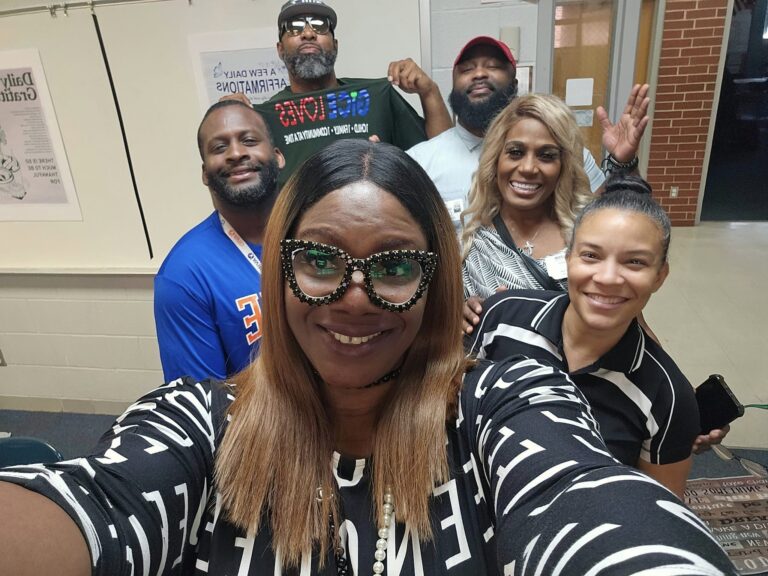Bridging the Gap Between Teachers’ Mission and Vision and the Education System
Teaching is a gift – an offering of education, support, and the self. Part of this offering is the strong sense of purpose that teachers bring to the classroom. But often, there is a gap between teachers’ mission and vision and the education system.
Teachers have well-formed visions of how to best educate their students. The education system they work within, however, may not align with these ideals.
When you’re trying to reconcile the two, this creates a gap that, unfortunately, some students fall through. Understanding how to reconcile this disconnect and exploring ways to bridge this gap is crucial for improving education outcomes and ensuring student success.
Though the ideals of the education system and an educator’s personal mission may be at odds with one another, one detail is always present – kids come first. And if you’re putting the needs of your students above all else, you’ll find ways to bridge this gap.
In this article, we’re exploring the importance of the teacher’s vision in a classroom. We’ll also explore practical strategies for bridging the gap between a teacher’s mission statement and the wider education system in order to best serve all students.
The importance of a teacher’s mission and vision.
Teachers play a critical role in shaping the future of their students. They bring unique perspectives, experiences, and values to the classroom. Ultimately, their mission and vision for their classrooms has a lasting effect on not only students, but the communities they are a part of.
Because education is such an all-consuming career, teachers develop a significant purpose in their work. A teacher’s mission may be to inspire students to develop a love of learning and become lifelong learners. Lifelong learners are open-minded and curious, with a growth mindset.
Many teachers also want to teach their students crucial critical thinking skills and practical knowledge that will hold importance for the rest of their lives; this gift will prepare students for success in any endeavors they choose.
Aligning their mission and vision with the education system they work within sometimes feels impossible. The resources and funding shortages, especially for Title 1 schools feel like big ol’ roadblocks.
Identifying the disconnect between teacher mission and vision and the education system.
The first step in bridging the gap between teacher mission and vision and the education system is identifying where the disconnect lies. And with that, you need to look at this gap from all perspectives.
Some teachers may feel that their values and goals are not reflected in the curriculum or policies of their school or district. On the other hand, administrators may feel that teachers are not following established protocols or are resistant to change.
And, in some cases, students may feel that teacher missions and board-regulated protocols are not best serving their needs. Open and honest communication between all stakeholders is essential to identify areas of misalignment and work toward solutions that benefit both teachers and students.
In the end – students are the only thing that matters and their needs have to be prioritized over any personal missions or interests.
With this goal in mind, teachers and school leaders should find a pathway to reconcile this gap.
The impact of bridging the gap on student success.
When teachers feel that their mission and vision align with the education system, they are more likely to be engaged and motivated in their work; this can lead to improved teaching practices, better relationships with students, and ultimately, higher levels of student success.
When educators aren’t at odds with the system they’re working within, they can better focus their energies on serving their students and delivering them quality education. Teachers have so much more to offer their students than the curriculum from a textbook. And when they’re free to do so, students flourish.
Overall, students benefit from teachers who are passionate about their work and who feel supported by the education system.
By bridging the gap between teachers’ mission and vision and the education system, we can create a more positive and effective learning environment for all.
Strategies for bridging the gap between a teacher’s mission and vision and the education system
We know the problem – but how can we fix it? These four strategies can be used for bridging the gap between teachers’ mission and vision and the education system.
Whether you’re an educator, a community member, or a school leader, you can advocate for these changes:
1. Give teachers a voice
One strategy for bridging the gap between teacher mission and vision and the education system is to provide opportunities for teachers to have a voice in decision-making processes.
Teachers are on the front lines – no one knows more about their students’ needs. It only makes sense then, that they are given the chance to speak for them.
This can include involving teachers in curriculum development, school improvement planning, and professional development opportunities.
2. Create a culture of collaboration
Creating a culture of collaboration and open communication between teachers and administrators can help to ensure that teacher perspectives are valued and taken into account.
When you’re a small fish in a big pond, it can seem like your ideas don’t matter. A culture of collaboration amplifies even the smallest of voices.
3. Provide ongoing support and resources to educators
Providing ongoing support and resources for teachers can help to ensure that they feel empowered and motivated to achieve their mission and vision for their students.
Teachers have so much to give – by providing them with the appropriate resources, students will absolutely benefit.
4. Create an inclusive school vision
Through continual collaboration, teachers, community members, students, and school leaders can come together to create a collective school vision.
School vision and teacher visions should always align. And when students are the number one priority, these visions should work seamlessly with one another.
As a community, you can come together to create a collective vision that supports all students and educators.
The role of school leaders in bridging the gap
School leaders play a crucial role in bridging the gap between teacher mission and vision and the education system.In many ways, school leaders hold all the power – but by giving teachers the opportunity to advocate for themselves and their students, they can help reallocate some of this power.
This can be achieved through creating a culture of collaboration and open communication, as well as providing opportunities for teachers to have a voice in decision-making processes. School leaders can also provide ongoing support and resources for teachers, such as professional development opportunities and access to instructional materials and technology.
By working together with teachers, school leaders can help to ensure that the mission and vision of the school are aligned with the needs and goals of the students.
Final thoughts
It is so important for teachers and school leaders to align their visions in order to best serve students and their needs.
By recognizing the gap and collaborating on an inclusive, collective vision, educators and school boards can reconcile their differences and best focus on the students they serve.







